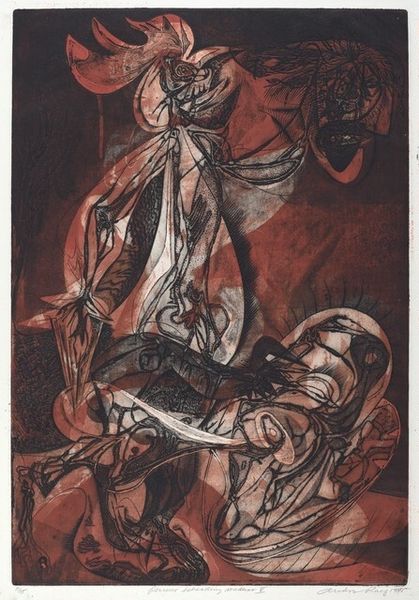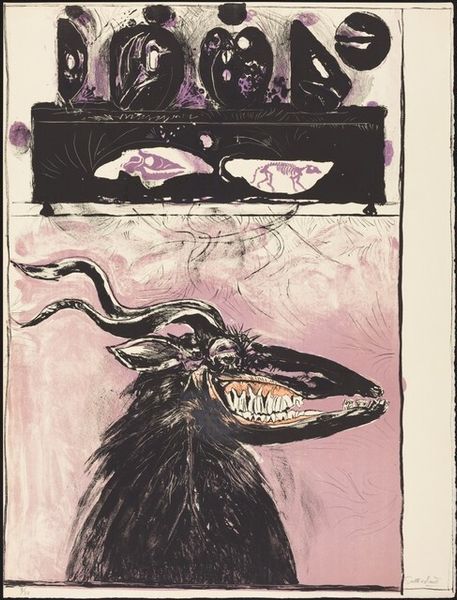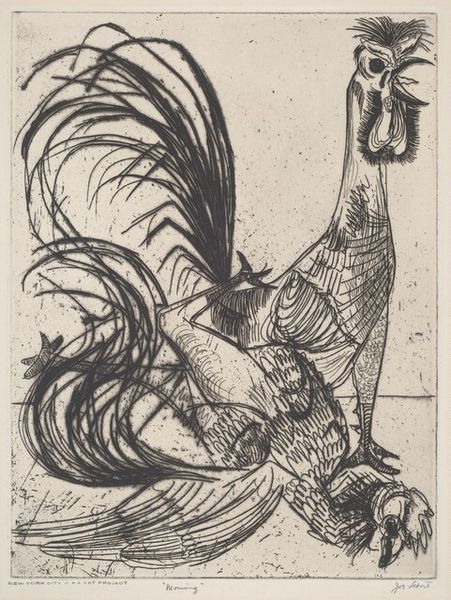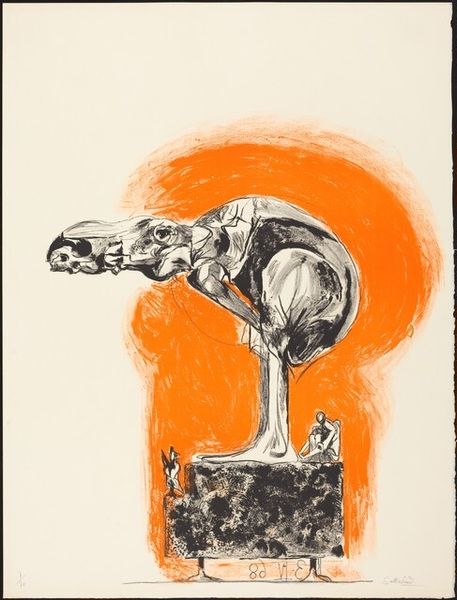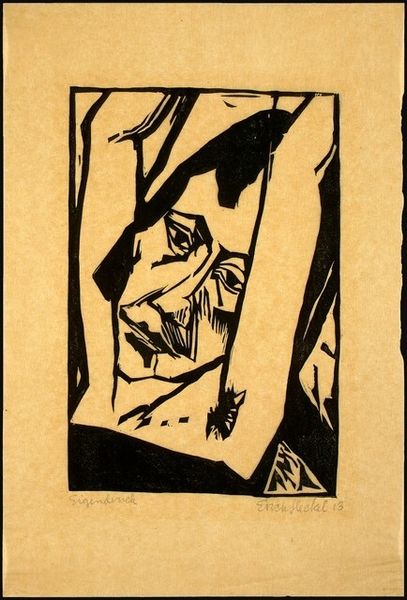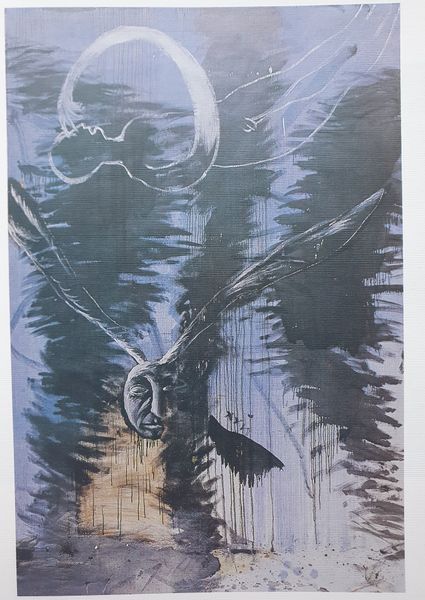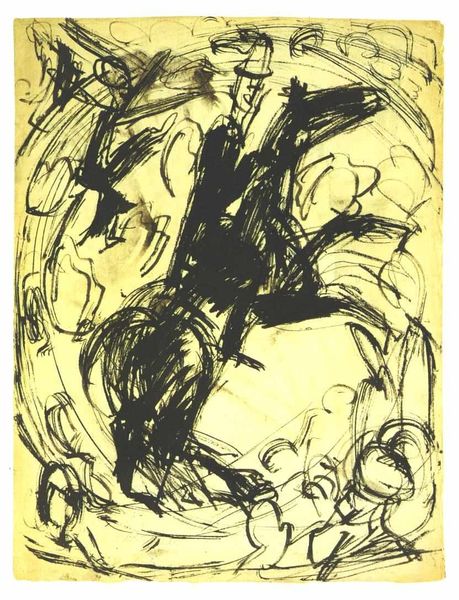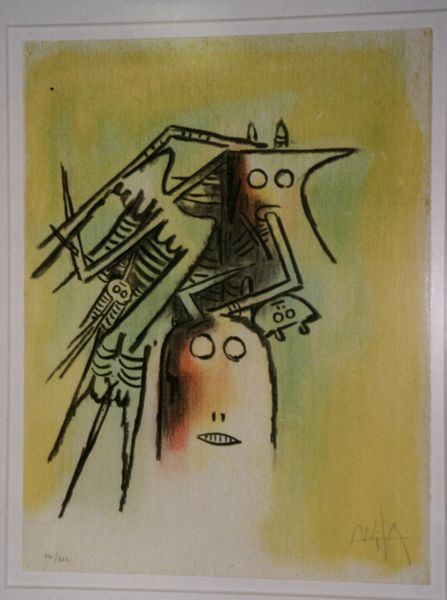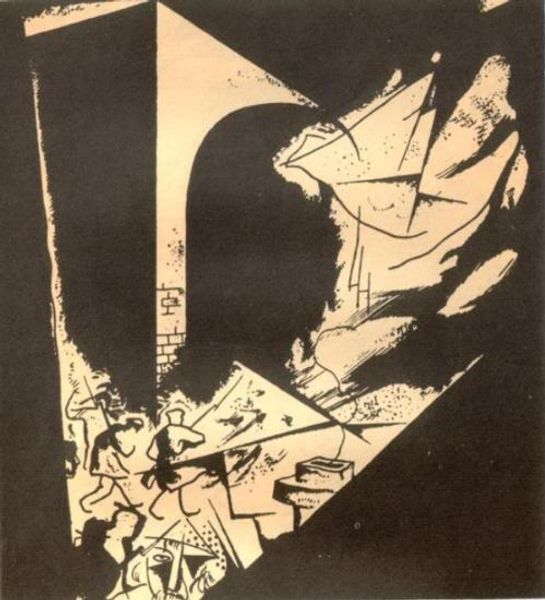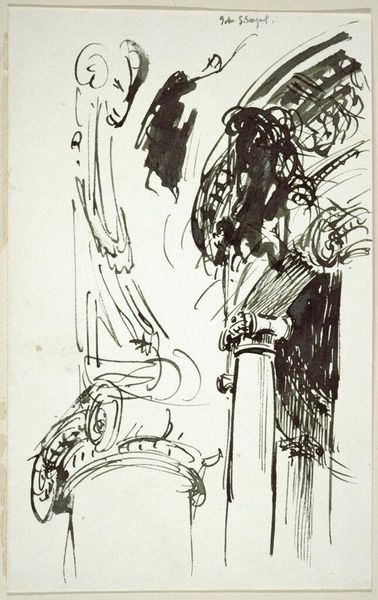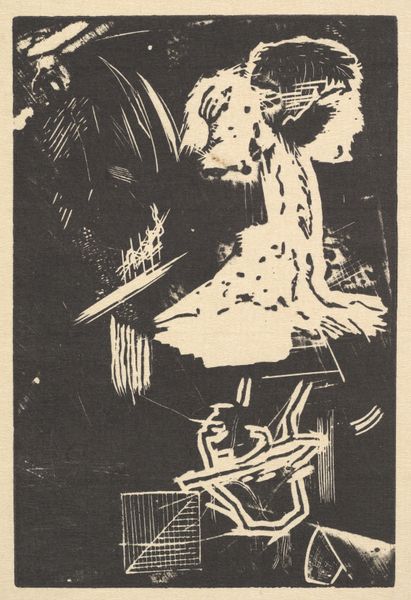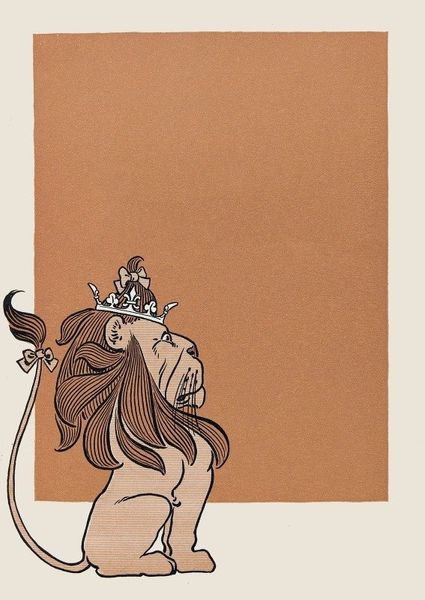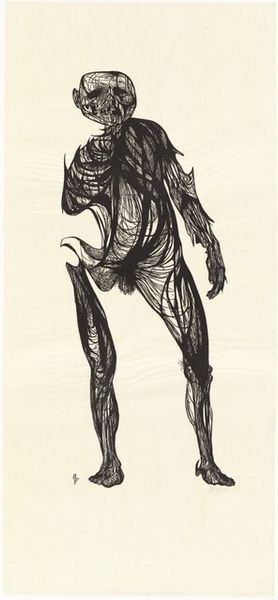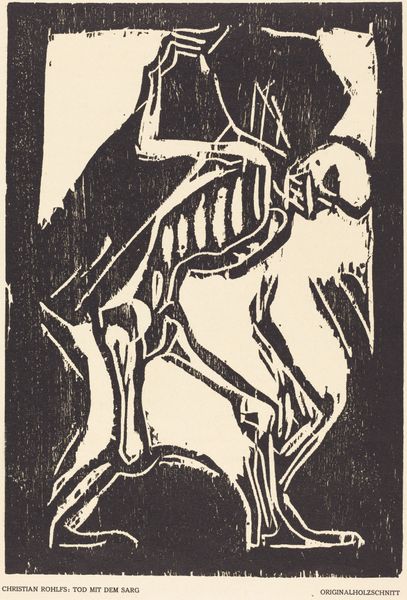
#
fine art illustration
#
childish illustration
# print
#
junji ito style
#
fluid art
#
linocut print
#
naive art
#
surrealism
#
tattoo art
#
munch-inspired
#
doodle art
Dimensions: sheet: 65.7 x 49.5 cm (25 7/8 x 19 1/2 in.)
Copyright: National Gallery of Art: CC0 1.0
Editor: Graham Sutherland’s “Bird About to Take Flight,” a print from 1968, feels… unbalanced to me. The bird looks almost prehistorically awkward, and that stark orange background intensifies the feeling. What symbolic weight do you see in it? Curator: Ah, yes, the primal awkwardness. Notice how Sutherland doesn’t give us a serene, graceful bird. Instead, this creature struggles, caught in a moment of becoming. The colors - acid green and black against that intense orange - they jar us, don’t they? Reminds me of stained-glass windows where darkness meets light. Editor: So, the disharmony is deliberate? I was so distracted by that… strange little structure at the bottom. Curator: That secondary form at the bottom is vital. Think of it as the seed from which this awkward, struggling bird springs. It represents potential, growth, a slightly grotesque genesis. Sutherland often wrestled with duality: growth and decay, beauty and ugliness, safety and threat. Editor: That makes sense! It’s like he’s presenting us with the whole life cycle in one image – the potential and the awkward present moment. What about the colours though? Do they have specific meanings? Curator: In many cultures, green signals hope, new beginnings. The black adds an element of the unknown, perhaps the struggle required for that take-off. And orange is so vital. Could it stand for optimism or the burning sun under which transformation takes place? How else do you read those colour combinations? Editor: I think you are right! The Orange creates heat or energy around the green, but it is bounded by black so the vitality feels caged... that reinforces the image's awkwardness again, right? Curator: Precisely! Sutherland uses this cage to show both the promise and restraint, revealing how potent symbology continues to affect and disturb us even across time and change. Editor: Thank you, that helps! I will remember to check symbolic use to reveal psychological narrative next time.
Comments
No comments
Be the first to comment and join the conversation on the ultimate creative platform.
